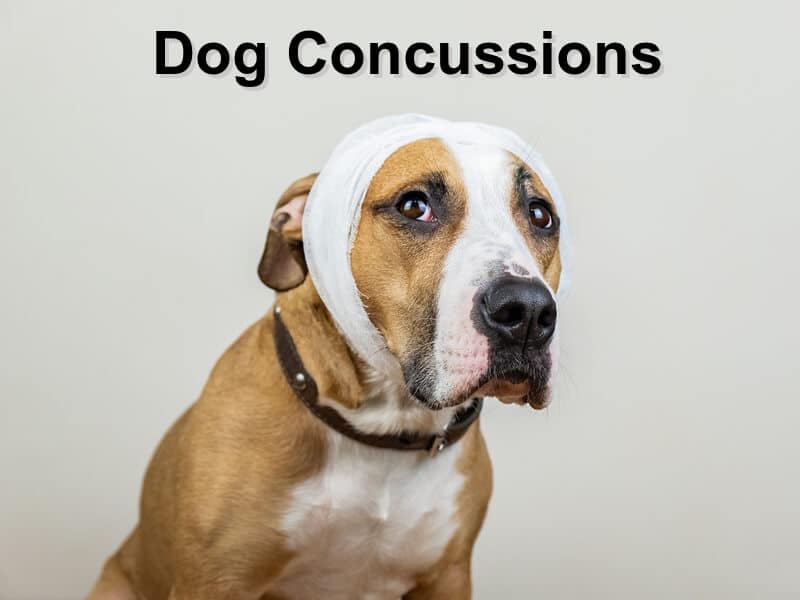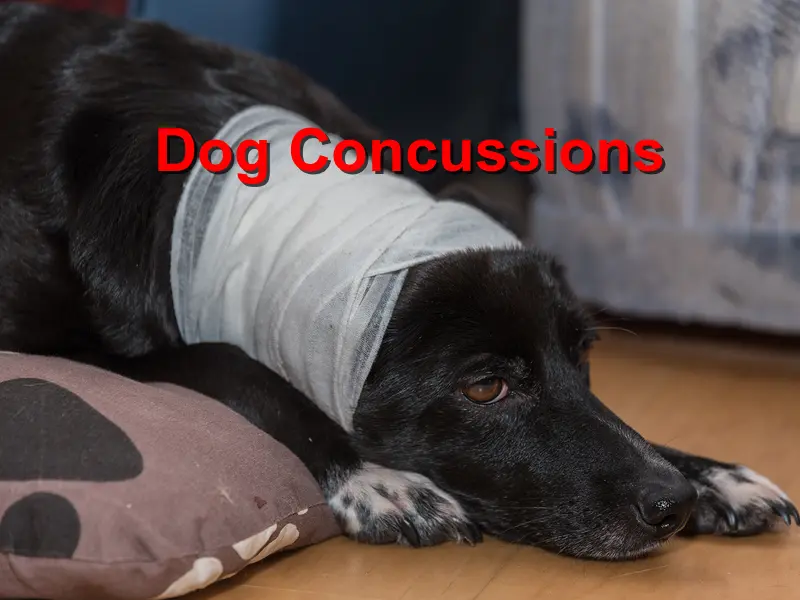Dog Concussion: Symptoms, Causes & Treatment Guide | PetMD
Can our canine companions suffer from concussions? The answer, unequivocally, is yes. Dogs, much like humans, are vulnerable to traumatic brain injuries, and recognizing the signs is crucial for their well-being.
While the idea of a dog with a concussion might seem unusual, it's a reality that pet owners need to understand. A concussion is, at its core, a traumatic brain injury (TBI), and our furry friends are not immune. Unlike a simple bump on the head, concussions in dogs are typically the result of more forceful events. These often include car accidents, altercations with other animals, or falls from significant heights. As responsible pet parents, we can take steps to protect our dogs from these potential dangers.
Before delving deeper, it's important to provide a general understanding of concussions in dogs. They're more common than one might think and understanding the underlying factors can help in prevention and treatment.
| Feature | Details |
|---|---|
| Type of Injury | Traumatic Brain Injury (TBI) |
| Common Causes | Car Accidents, Falls, Animal Attacks, Rough Play |
| Susceptible Breeds | Toy breeds, breeds with short skulls, those with open fontanels |
| Diagnosis | Veterinarian Assessment, Imaging tests (MRI, CT scans) |
| Treatment | Rest, medication (as prescribed by vet), physical therapy (in some cases) |
| Potential Complications | Brain swelling, brain bleeding, permanent brain damage |
| Preventive Measures | Supervision during play, safe travel in cars, avoidance of risky environments |
| Website Reference | American Kennel Club - Concussions in Dogs |
The anatomy of a dog's skull plays a role in concussion susceptibility. While most dogs possess thick skulls, offering a degree of protection, certain breeds are more vulnerable. Toy breeds, and those with brachycephalic (short-nosed) skulls, are among those at a higher risk. These dogs may have more delicate skulls, or in the case of puppies, open fontanels soft spots where the skull bones haven't fully fused. This can increase their vulnerability to concussions.
The term "concussion" in dogs, as in humans, refers to a mild form of traumatic brain injury. Veterinarians often use this terminology to describe brain injuries resulting from external forces. It's crucial to remember that while dogs might have thicker skulls and more muscle mass than humans, making head trauma less frequent, it is still just as dangerous when it occurs.
A dog can experience a concussion in several ways. Car accidents are, unfortunately, a primary culprit. The forces involved in a collision can easily cause a dog's head to strike an object or be subjected to sudden, violent movements, leading to a concussion. However, there are other potential scenarios. Falls from elevated surfaces, such as stairs or furniture, roughhousing with other dogs, and being struck by objects (like a ball or falling debris) can all contribute to a concussion.
One of the most critical aspects of managing canine concussions is recognizing the signs and symptoms. A dog with a concussion may exhibit a range of behavioral changes. These can include lethargy, or unresponsiveness, disorientation, loss of balance, stumbling, or difficulty walking. Seizures can also be a sign. It's also crucial to monitor for changes in behavior.
If you suspect your dog has suffered a head injury and is exhibiting any signs of a concussion, immediate veterinary attention is paramount. Your veterinarian will perform a thorough examination and may recommend diagnostic tests, such as MRI or CT scans, to assess the extent of the injury. Swift action can prevent complications.
The aftermath of a concussion necessitates a period of rest and recovery. Vigorous activities, such as playing fetch or engaging in energetic games, should be avoided for several weeks. Your veterinarian may prescribe medications to address any underlying issues. For example, certain pain relievers, such as aspirin, should be avoided because they may increase bleeding.
Prevention is always the best medicine. As pet parents, we can take proactive measures to minimize the risk of concussions. This includes ensuring dogs are safely secured during car travel, supervising them during play, and being mindful of their environment. Small dogs should be closely monitored when playing with larger dogs or other animals. Also, be careful when dogs are around other species like horses or cattle, who may kick to express annoyance.
What happens if a concussion goes untreated? If a concussion is left unaddressed, the consequences can be severe. The dog may suffer from brain swelling, bleeding within the brain, and permanent brain injuries. These are all serious, and potentially irreversible. Early intervention is, therefore, critical.
The diagnostic process can sometimes be challenging, as dogs cannot explicitly communicate what they're experiencing. Veterinarians rely on observing signs and symptoms, conducting physical examinations, and, in some cases, using imaging techniques like MRI or CT scans to arrive at a diagnosis.
While the focus here is on concussions, it's important to note that head injuries can result in other types of trauma, such as skull fractures. Although less common, a skull fracture is a more serious condition. If you suspect a fracture, emergency veterinary treatment is crucial.
Physical therapy can be beneficial for dogs recovering from concussions. It can aid in enhancing strength, balance, and coordination. It can also contribute to reducing pain and inflammation, resulting in a speedier and more complete recovery. While it's not a substitute for professional veterinary care, it can be a valuable part of the rehabilitation process.
While this article has focused on the common causes and symptoms, veterinarians can list many more situations that could lead to a dog's concussion. It could be being kicked by a farm animal, being hit by a ball or a baseball bat, falling off a porch, running into trees or cars, and falling debris.
Concussions in puppies require special attention. Because puppies cannot verbalize their discomfort, recognizing the symptoms is vital. These signs often include disorientation, staggering, lethargy, and, potentially, seizures. These can occur when a puppy is dropped or during rough play.
Emergency funds can play a significant role in ensuring that dogs receive the treatment they need for concussions. The costs of veterinary care, including diagnostic tests and treatment, can be substantial. Having access to an emergency fund can help cover these expenses, enabling pet owners to act swiftly and effectively.
The distinction between concussions in humans and dogs lies in the ability to communicate symptoms. Humans can articulate their feelings, while dogs cannot. Owners, therefore, must rely on their observational skills to recognize signs of a concussion. Key indicators include changes in behavior, lack of coordination, and disorientation.
The importance of early detection and treatment cannot be overstated. The sooner a concussion is diagnosed and treated, the better the chances of a full recovery. This is why knowing the signs and symptoms of a concussion is so important, and seeking immediate veterinary care is paramount.
In summary, concussions in dogs are a significant concern for pet owners. By understanding the causes, recognizing the symptoms, and taking preventive measures, we can help safeguard our canine companions' well-being and ensure they receive the care they need to recover fully.


